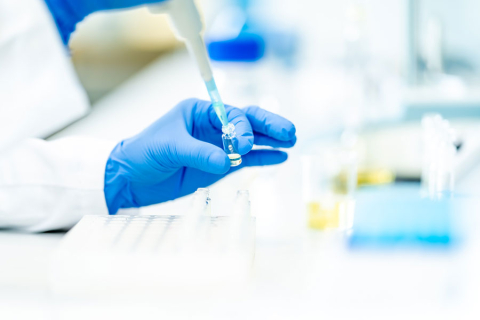The results of the sixth round of the MINIATURA 7 competitive procedure were announced on November 13. Researchers from our University were among the 238 winners who will be pursuing research worth nearly 9.4 million PLN at institutions all over Poland.
About our researchers’ projects
Agnieszka Kołodzińska, PhD, from the First Department and Clinic of Cardiology at WUM University Clinical Center (UCK WUM), received funding for preliminary/pilot research on the assessment of active myocardial fibrosis with [68 Gal] Ga-FAPI PET/CT method in hypertrophic cardiomyopathy patients. The funding was offered at PLN 49,500. As stated in the project application, myocardial fibrosis leads to heard function impairment. It is the primary mechanism both in such frequent diseases as ischemic heart disease and in rare heart conditions such as hypertrophic cardiomyopathy (HCM). Currently, the best methods to evaluate the heart function are: echocardiography (ECHO) and cardiac magnetic resonance imaging (cardiac MRI), which are capable of determining the degree of cardiac fibrosis. Unfortunately, a valuable method is still missing for defining active fibrosis, a fundamental process in negative remodeling of the heart. The researchers involved in the project hypothesize that active fibrosis can be reversible and modifiable; therefore, they intend to study it through ongoing and future experiments. The purpose of the study is to determine the quantity and model of active cardiac fibrosis with [68 Ga]Ga-FAPI PET/CT, as compared to fibrosis assessed through cardiac MRI and ECHO.
Magdalena Majdan, PhD, from the Toxicology and Bromatology Department, received funding for preliminary/pilot study on the assessment of embryotoxicity of food additives with the engagement of artificial intelligence. Funding amount: PLN 44,440. As stated in the project application, epidemiological research of the recent years indicate a correlation between consuming “ultra-processed foods” (with mixtures of food additives) and the risk of occurrence of chronic diseases. The controversy around synthetic additives encourage researchers to undertake basic research on the safety of food constituents of natural origin which, in addition to their health benefits, have a number of other functions such as coloring, preservation, antioxidation, and which are integrated in the concept of sustainability. The purpose of the contemplated research activity is to assess the embryotoxicity potential of selected colorants (Brilliant Blue, Quinoline Yellow, Azorubine, Tartrazine, Erythrosine, Allura Red) and their interactions based on combination with other food additives on Danio rerio embryo model. The expected findings will contribute to new knowledge of the toxicological risk assessment for food additives used during embryonic development, so that the existing scientific knowledge can be extended with the matters of safety of using this group of chemicals.
Dagmara Otto-Ślusarczyk, PhD, from the Biochemistry Institute and Department, received funding for preliminary/pilot studies of the impact of ferroptosis inducers on exosome interactions of tumor cells in physiological oxygen concentration. The amount of funding was PLN 49,940. As stated in the project application, the objective of the study is to evaluate the impact of proferroptotic compounds (ART/DHA,DOX,HNK) in pharmacological concentrations on GPx4 expression and lipid peroxidation in primary and metastatic tumor cells in the state of physioxia and hypoxia. There are three basic features defining ferroptosis, i.e. loss of GPx4 lipid peroxidation repair function, accessibility of redox state iron, and oxidation of PUFA containing phospholipids. The above specified features will be studied in cancer cell cultures in physiological conditions, i.e. in the presence of holo-transferrin (iron-transferrin complex) and linoleic acid (essential PUFAs) at 10% and 1% oxygen content. Ferroptosis in cancer cells has not yet been studied with pharmacological concentrations and physiological levels of oxygen. The results will provide data for possible clinical trials for using the studied compounds in cancer treatment.
